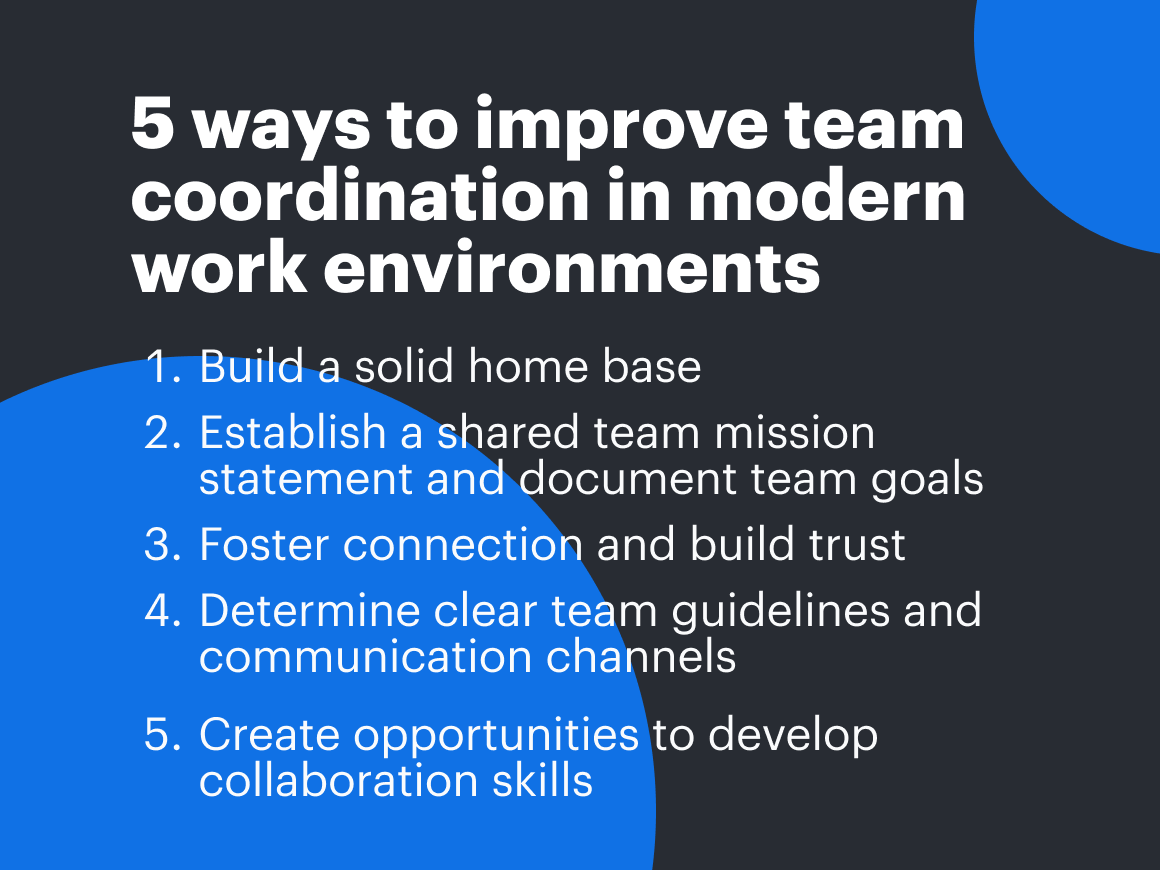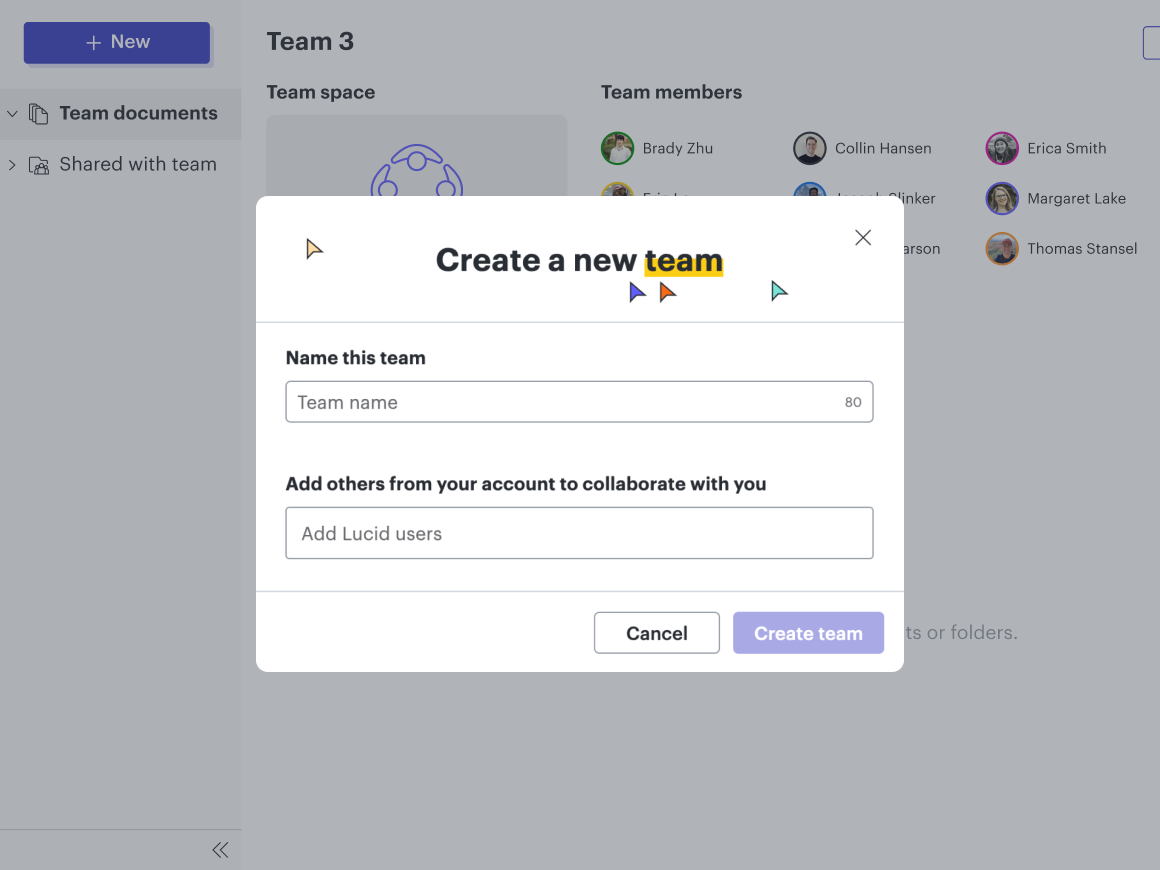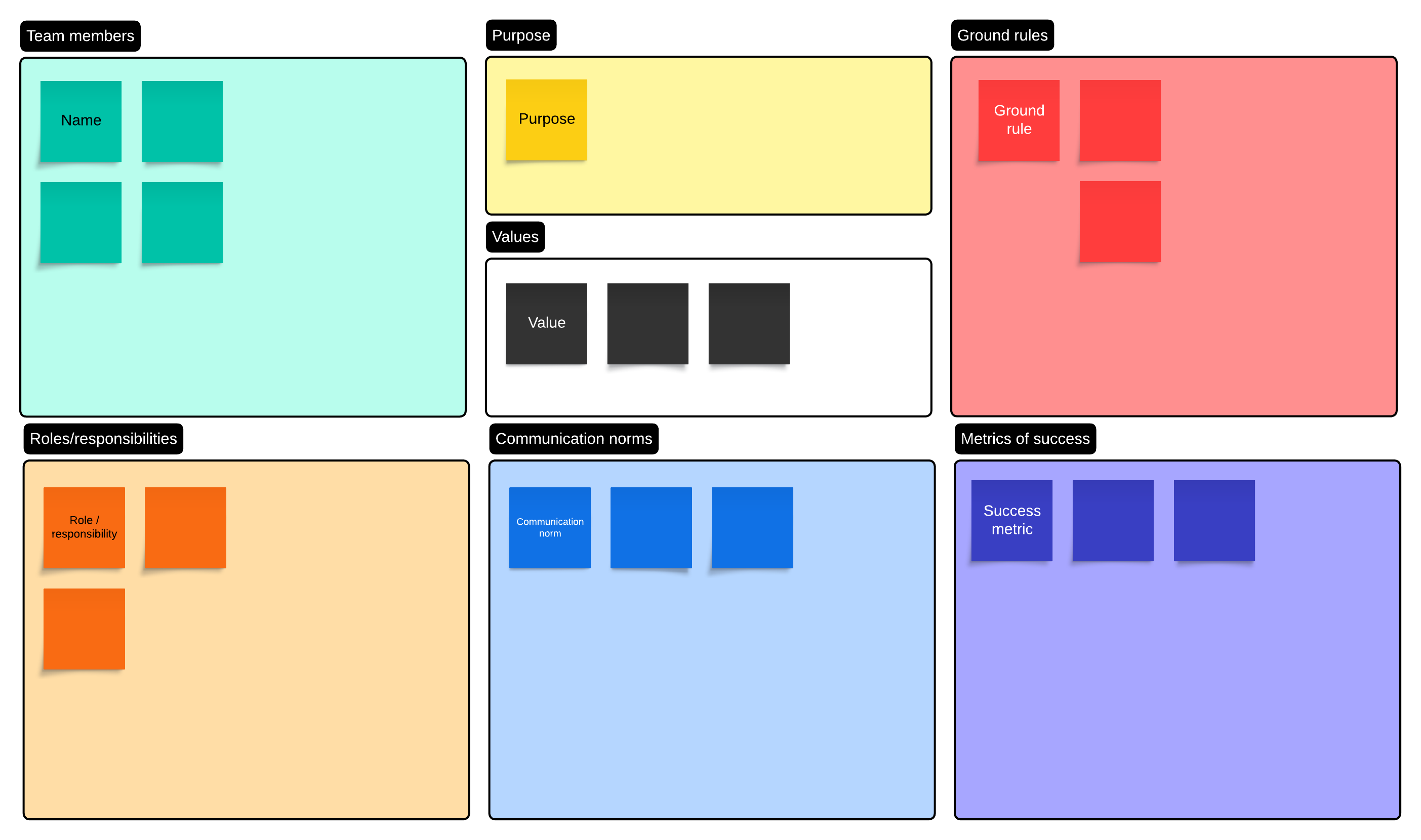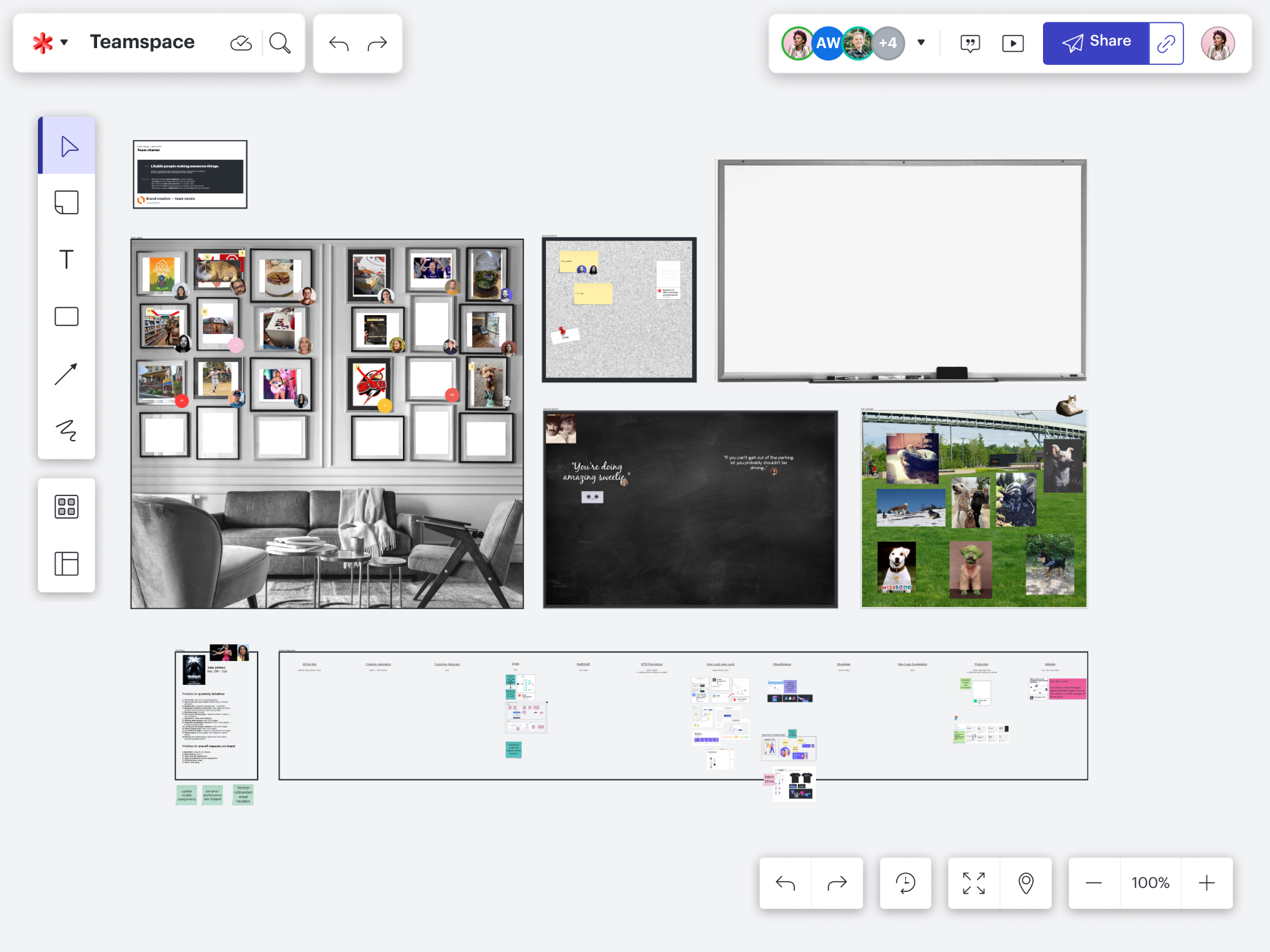
[Guide] How to improve team collaboration by mastering team coordination
Reading time: about 9 min
Topics:
You can do endless team-building activities, encourage open communication, and follow all other best practices out there to try to improve team collaboration, but your efforts will only go so far without first mastering one basic element: coordination.
That’s right: Effective team collaboration hinges on your ability to organize team members and tasks in the most efficient way possible.
This post will explore five practical ways to improve team collaboration through the art of coordination. These actionable strategies will help leaders give their teams the tools needed to drive results.
What is team collaboration, and what role does coordination play?
Teams are the heartbeat of organizations. Whether functional teams (like a marketing team) or cross-functional teams (like tiger teams or Scrum teams), they need to collaborate effectively to be innovative, efficient, and engaged.
Team collaboration involves working together, sharing ideas, and solving problems to reach a shared outcome. Coordination involves arranging people, work, and timelines to ensure projects run smoothly. It’s easy to see how teams that don’t have a way to coordinate work—to share project progress, access relevant project info, and see how their work fits into the larger picture—will struggle to reach their goals effectively.
Coordination challenges that prevent effective team collaboration
The definition of “team” has changed in recent years. Teams are more dynamic than ever. Some might be primarily remote or in-office, but most fall on the hybrid spectrum.
These circumstances contribute to the complexity of team coordination. As a result, some of the challenges modern teams face include:
-
Establishing effective communication: Teams often struggle to communicate and align effectively across different locations and working environments. Without establishing clear communication channels, it’s difficult to coordinate shared goals.
-
Relying on inefficient, traditional communication methods: Using traditional communication methods like email chains to coordinate work can lead to miscommunication, walls of text, and delayed projects.
-
Understanding workflows and progress: Teams often struggle to understand workflows and find key documents. In a recent Lucid survey, one-third of workers reported difficulty finding relevant project information.
-
Navigating hybrid meetings: Hybrid meetings require both careful planning before the meeting and clear follow-up afterward. Otherwise, important context or deadlines can slip through the cracks.
5 ways to improve team coordination in modern work environments
Coordinating teams means facilitating success for your people. It’s about removing project roadblocks, systematic impediments, and communication challenges while adding organization, clarity, and structure to work.
Centralizing your coordination efforts is the best way to accomplish this goal and master team coordination. We have five actionable strategies to get you started.

1. Build a solid home base
Before focusing on team collaboration, you need to set up a strong foundation. Creating a central home base is essential for smooth coordination. Your home base should be a single source of truth for collaboration, communication, and information sharing.
When looking for the perfect platform to build your team’s new HQ, make sure you have the following features:
-
Easy to access: Make sure everyone can access important information from anywhere, anytime. Using a cloud-based platform ensures everyone stays in the loop, no matter where they are.
-
Visual: Forget complicated text documents. Instead, try visual collaboration platforms to make it easier to understand complex information. Visuals help communicate ideas clearly and speed up decision-making.
-
User-friendly: Your home base should be easy for everyone to use, whether they're tech-savvy or not. Look for platforms with simple interfaces and powerful features under the hood.
-
Interactive: Keep the team engaged with interactive capabilities like real-time collaboration and instant feedback. Being able to comment, tag, and react directly within your team’s hub makes communication smoother and teamwork more efficient.
-
Integrated: Save time and effort by choosing a platform that works well with your existing tools. Integration with project management software and communication tools ensures a seamless workflow.
Pro tip: Provide your team with a one-stop shop using team hubs in Lucid. With team hubs, you can centralize key documents, workflows, and projects.

2. Document a shared mission statement, goals, and resources
Building a shared sense of purpose is the cornerstone of effective team coordination. With so much movement happening within modern projects and tasks, giving teams a lighthouse that can guide them back to the mission at hand is important.
To get everyone on the same page, start by crafting a mission statement that captures your team's overarching objectives and values. From there, you can begin defining your shared goals. Those might be linked to company OKRs or more specific to your team. For example, one of your goals might be to increase the sales pipeline.

Essentially, the mission statement sets the team's direction, while your goals provide a roadmap for success.
Next, document and centralize how your team will reach those goals. That information might include a project plan to understand timelines, a workflow diagram to understand handoffs, and an org chart to understand roles and responsibilities.
Pro tip: Document your team’s goals in a shared space within your team hub to keep this important information visible and top of mind. Try team spaces in Lucid to document your team mission and other frequently referenced information in one shared document. Team members can add comments, share ideas, and facilitate meetings directly from your team space to centralize relevant communication as well.

Learn how to create a single source of truth your team will love to use.
Get the guide3. Determine clear team guidelines and communication channels
All teams need clear communication to be effective collaborators, so determining how you’ll keep everyone in the loop is a core component of team coordination.
For better collaboration, consider chat, email, meetings, visual collaboration, and other communication platforms as ways to ensure clarity and share essential context within your team. Depending on the project and team dynamics, you may require frequent or minimal communication. The key question to ask is: "Are the relevant team members equipped with the necessary information when they need it?"
Figuring out the answer to that question will help you define your communication channels and boost your coordination skills.
Along those same lines, it’s important to establish clear guidelines with your team regarding communication and collaboration so everyone is aligned on which channels to use and when.
Here are a few examples of what those guidelines or protocols could look like:
-
Meeting formats: What will your meeting cadence look like, and what will the format be? Are all of your meetings in person? Virtual? A mix of both? What is the purpose of each meeting? And what kind of communication would be better in an asynchronous format? Answer these questions clearly and stay consistent when it comes to hosting these meetings so that team members always have a touchpoint.
-
Roles and responsibilities: How do you define roles and responsibilities on your functional team? What about cross-functional teams? The clearer you get here, the better. Ensure that these roles and responsibilities are documented in your team’s shared home base.
-
Project updates: How should team members give project updates? Which stakeholders do they need to update? How can you increase workload visibility across your team? Providing transparency into project status also goes a long way in establishing trust among team members and leadership.
-
Conflict resolution: When conflict inevitably arises, what is the protocol for growing from the experience? Creating a shared conflict resolution protocol with your team means you’ll get buy-in from everyone, and then the team knows the goal is to create a safe space for all opinions.
Creating clear guidelines for how your team will handle these scenarios ensures that coordinating work goes smoothly.

4. Foster connection and build trust
Building strong connections and fostering trust within a team is the bedrock of collaboration and productivity. Without this foundation, coordinating work will be nearly impossible. If your team doesn’t trust you to facilitate their success, it’ll hinder their overall satisfaction and performance.
So, don’t underestimate the power of building strong relationships with your team members (and encouraging them to do the same with each other!). Here are actionable steps to strengthen bonds and cultivate a supportive team environment:
-
Schedule regular check-ins: Set aside dedicated time for team check-ins, whether virtual coffee chats or brief stand-up meetings. These informal gatherings provide opportunities for team members to connect on a personal level, share updates, and build rapport.
-
Share personal updates: Dedicate a portion of meetings or team chats to sharing personal updates or stories. This allows team members to get to know each other beyond their professional roles and strengthens interpersonal connections.
-
Celebrate achievements: Recognize and celebrate individual and team accomplishments regularly, whether that’s reaching a project milestone or a personal triumph. Acknowledging achievements boosts morale and reinforces a sense of unity.
Pro tip: Create a section in your team space in Lucid where members can share updates, anecdotes, and photos. This way, teams create a sense of community and camaraderie.

By prioritizing connection and trust in your coordination efforts, you’ll cultivate an environment where individuals feel valued, respected, and empowered to collaborate effectively.
5. Create opportunities to develop collaboration skills
Once you have the right platforms and channels in place for team coordination, you need to help team members effectively use these channels and work together. Team collaboration is a skill that can (and should) be improved!
Creating these learning opportunities is key to effective team coordination, especially in hybrid environments. Team members need guidance on facilitating meetings, sharing project updates asynchronously, maintaining documentation, and more.
Need some inspiration? Here are just a few ideas for how to start coordinating these learning opportunities for your team:
-
Offer training sessions or workshops focused on collaboration techniques and best practices.
-
Provide access to online courses or resources covering various aspects of collaboration, such as resolving conflict, making group decisions, and even using digital collaboration tools.
-
Encourage team members to participate in collaborative projects or cross-functional teams to gain practical experience.
-
Establish a culture of feedback and reflection, where team members regularly discuss their collaboration experiences and share insights for improvement.
Pro tip: Keeping a collection of these resources in your team space makes it easy for team members to access them on their own time. Plus, a repository of resources also helps onboard new members and gets them up to speed faster.

The most important workplace collaboration skills
Get tactical tips and courses to become a better collaborator.
Read the blogCoordinate work across every team with Lucid
As a leader, you want to help your team succeed. After all, they’re what fuels the organization's engine. Individuals feel empowered and fulfilled when teams collaborate and work toward a shared goal.
You need an ally to help you coordinate all of your team's work efficiently and effectively. That’s where Lucid comes in. Our powerful visual collaboration platform combines virtual whiteboarding and intelligent diagramming under one roof so you can easily leverage the full power of the Lucid Suite.
To improve team coordination even further, try Lucid’s new team experience with a whole host of options for uniting team members.

Want to learn more about the team experience in Lucid?
Check out this article to dive into our latest feature launches.
Get the updateAbout Lucid
Lucid Software is the leader in visual collaboration and work acceleration, helping teams see and build the future by turning ideas into reality. Its products include the Lucid Visual Collaboration Suite (Lucidchart and Lucidspark) and airfocus. The Lucid Visual Collaboration Suite, combined with powerful accelerators for business agility, cloud, and process transformation, empowers organizations to streamline work, foster alignment, and drive business transformation at scale. airfocus, an AI-powered product management and roadmapping platform, extends these capabilities by helping teams prioritize work, define product strategy, and align execution with business goals. The most used work acceleration platform by the Fortune 500, Lucid's solutions are trusted by more than 100 million users across enterprises worldwide, including Google, GE, and NBC Universal. Lucid partners with leaders such as Google, Atlassian, and Microsoft, and has received numerous awards for its products, growth, and workplace culture.
Related articles
The most important workplace collaboration skills today (with tips and courses to improve)
Get tips, resources, and courses to improve the most important collaboration skills in today’s complex, hybrid workforce.
Digital collaboration reimagined: A new approach for aligning teams
Whether your teams are in-office, remote, or hybrid, learn why digital-first collaboration is the key to alignment.
Guide: How to build a single source of truth your team will actually use
Building a single source of truth is challenging, so we’ve put together this guide to walk you through the process.
How to improve team alignment by overcoming the greatest barriers
What’s actually getting in the way of team alignment? Uncover the greatest barriers here and get tips to overcome them.
